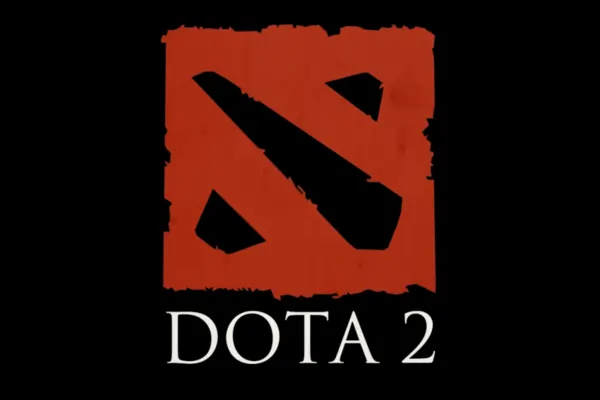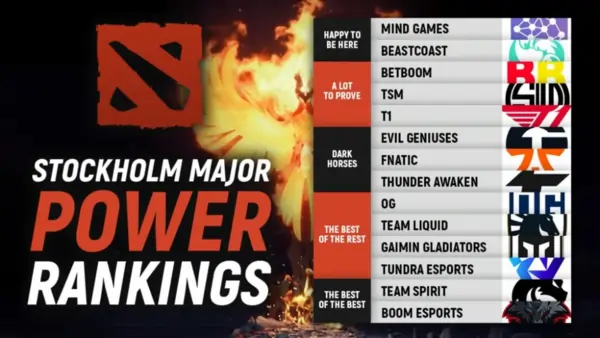
Introduction to Dota 2 Team Rankings
Dota 2 team rankings are a dynamic reflection of the ever-evolving competitive esports landscape. As one of the most prestigious games in the esports arena, Dota 2 attracts millions of players and fans worldwide, with professional teams competing for recognition, glory, and substantial prize pools. Rankings play a crucial role in determining a team’s standing in the global scene, showcasing their consistency, adaptability, and strategic excellence.
They are influenced by various factors, such as tournament performances, roster stability, and the ability to adapt to game meta shifts. This guide delves into how rankings are determined, highlights the top-performing teams, and explores the broader impact of rankings on the esports ecosystem. Whether you’re a fan, player, or new to the scene, understanding Dota 2 team rankings provides valuable insight into the competitive heartbeat of this iconic game.
Table of Contents

How Are Dota 2 Team Rankings Determined?
The methodology behind Dota 2 rankings is meticulous, accounting for several key factors:
- Tournament Results:
Rankings heavily depend on placements in tournaments, especially premier events like The International (TI) and the Dota Pro Circuit (DPC) Majors. - Match History:
Teams gain ranking points for defeating highly-ranked opponents, while losses to lower-ranked teams can lead to significant point deductions. - Team Stability:
Stability in roster composition often translates to better synergy and performance, positively impacting rankings. - Regional Performance:
Teams are also evaluated based on their strength relative to their region, which varies in competitiveness (e.g., Europe vs. South America). - Performance Over Time:
Teams that consistently perform well across multiple tournaments tend to maintain higher rankings.
Top Dota 2 Teams in Current Rankings
1. Team Spirit
- Region: Eastern Europe
- Major Achievements: TI10 winners
- Strengths: Exceptional drafting strategies and team chemistry.
2. PSG.LGD
- Region: China
- Major Achievements: Consistent top finishes in DPC and TI tournaments.
- Strengths: Tactical depth and veteran experience.
3. Tundra Esports
- Region: Western Europe
- Major Achievements: TI11 champions
- Strengths: Unique strategies and effective in-game communication.
4. Gaimin Gladiators
- Region: Western Europe
- Major Achievements: Multiple DPC Major wins in 2023.
- Strengths: Adaptability to meta changes and solid laning phase.
5. Evil Geniuses
- Region: South America
- Major Achievements: Strong showings in international tournaments.
- Strengths: Aggressive gameplay and high individual skill levels.
Key Factors That Influence Dota 2 Team Rankings
1. Tournament Prestige
Higher-ranked tournaments like The International, DPC Majors, and ESL events weigh more in rankings compared to smaller events or regional leagues.
2. Team Chemistry and Synergy
Teamwork is vital in Dota 2. Teams with well-coordinated players who understand each other’s playstyles often outperform others.
3. Adaptation to Meta Changes
The meta in Dota 2 shifts frequently due to game updates. Teams that quickly adapt to these changes maintain their competitive edge.
4. Consistency Across Events
One-off victories don’t guarantee a high rank. Teams that consistently place well across tournaments gain more ranking points.
5. Roster Stability and Changes
While acquiring high-profile players can bring short-term success, frequent roster changes can disrupt a team’s long-term performance.
Challenges of Maintaining High Rankings
Even for top teams, staying at the top is no easy task.
- Burnout and Fatigue:
The demanding schedule of professional tournaments can take a toll on players, leading to burnout. - Emerging Teams:
The competitive Dota 2 scene is dynamic, with new teams constantly challenging the established order. - Patch Updates:
Game updates from Valve can significantly alter the meta, forcing teams to relearn strategies and rework drafts. - Internal Conflicts:
Disagreements or lack of synergy within a team can impact morale and performance, causing rankings to drop.
The Role of Rankings in Esports
Dota 2 team rankings are crucial for multiple stakeholders:
- Fans: Rankings help fans identify which teams are performing well and generate excitement for upcoming matches.
- Tournament Organizers: High-ranked teams attract more viewers, boosting ticket sales and sponsorship deals.
- Sponsors: Companies invest in top-ranked teams to enhance their visibility in the competitive gaming space.
Disclaimer
This content is for informational purposes only and does not endorse or explicitly support any views or actions expressed herein.
Conclusion
Dota 2 team rankings are more than just numbers; they represent the hard work, adaptability, and strategic brilliance of professional teams. They serve as a benchmark for success in the ever-evolving esports industry, inspiring both players and fans alike. As the game continues to grow and evolve, rankings will remain a central part of the Dota 2 ecosystem.
FAQs About Dota 2 Team Rankings
How often are Dota 2 rankings updated?
Rankings are typically updated after major tournaments and events to reflect the latest performance trends.
Do rankings vary by platform?
Yes, different platforms or organizations may use varying criteria, leading to slight differences in rankings.
Can a new team rise to the top quickly?
Yes, new teams can rise quickly by performing well in high-profile tournaments and defeating top-ranked teams.
How do roster changes impact rankings?
Roster changes can disrupt team synergy, potentially leading to a drop in performance and rankings.
What role does the meta play in rankings?
The meta significantly impacts rankings as teams that adapt quickly to patch changes often gain an advantage in competitive play.
Sources
GameScoreWire does not endorse or explicitly support any views or actions expressed in this content.








